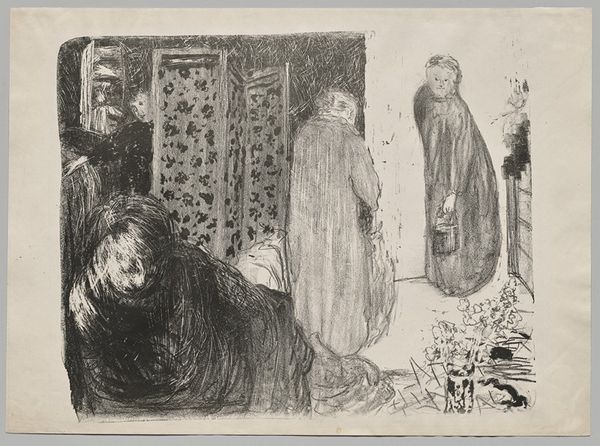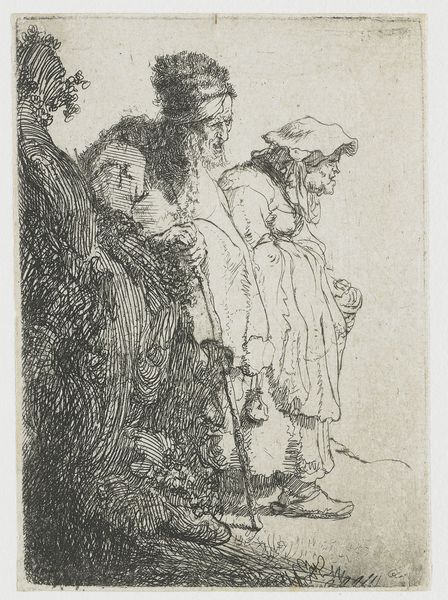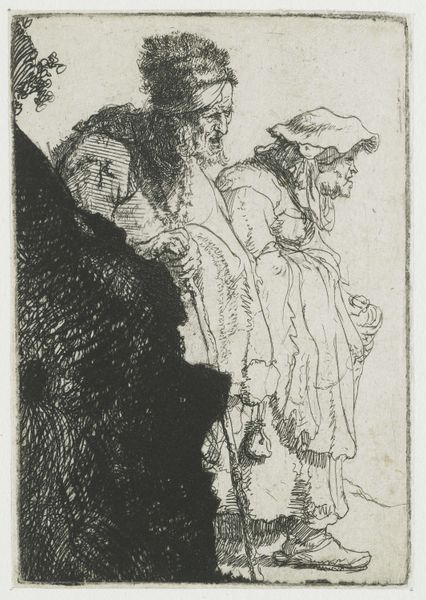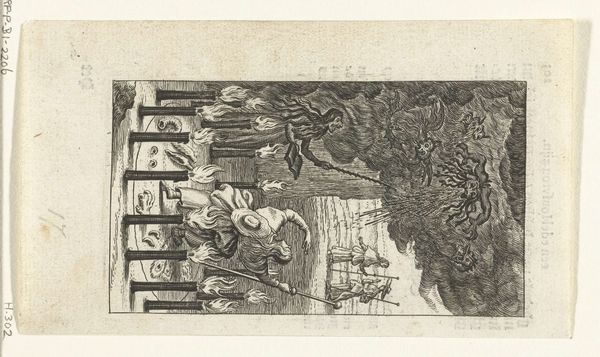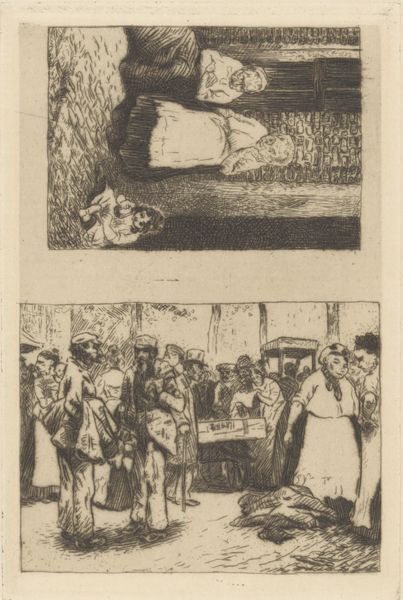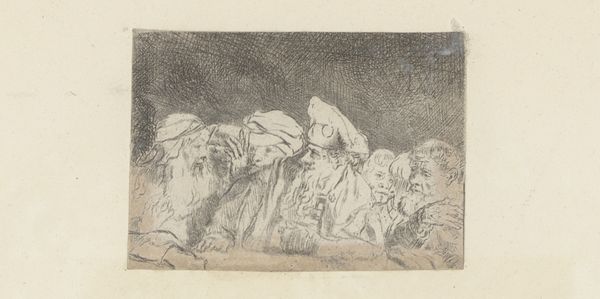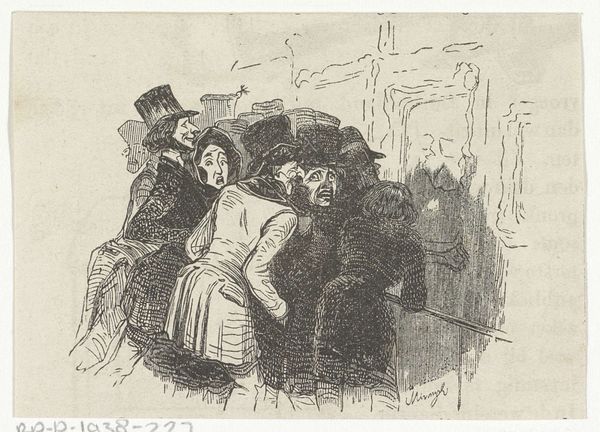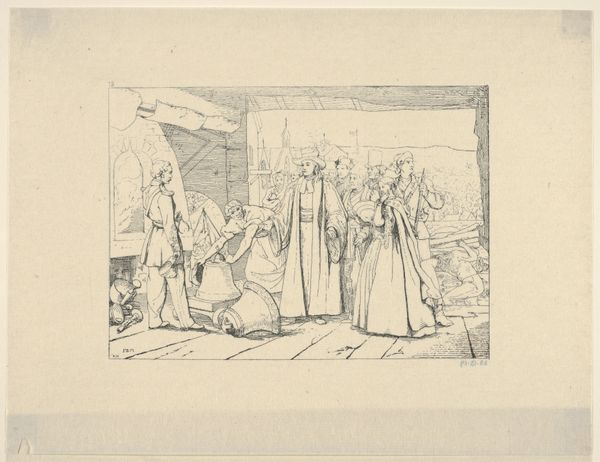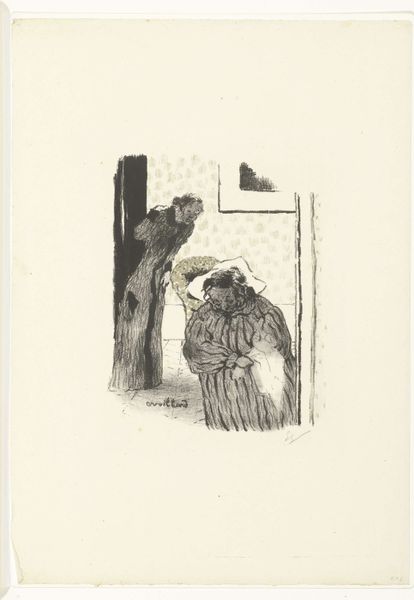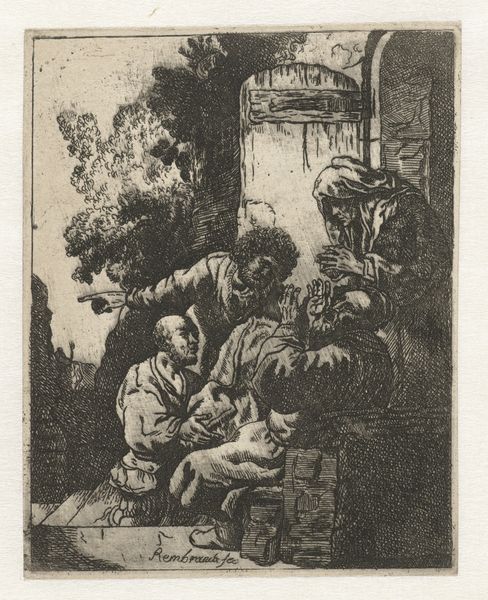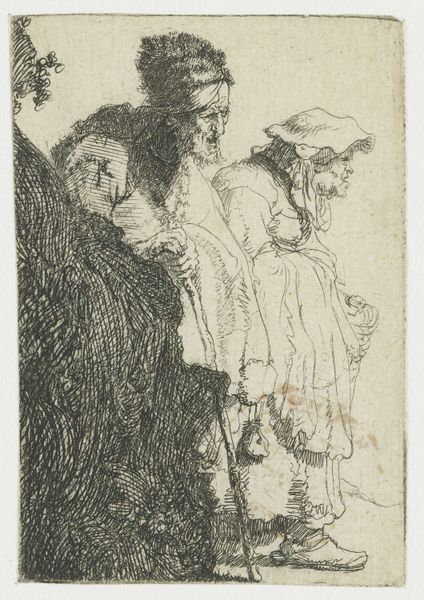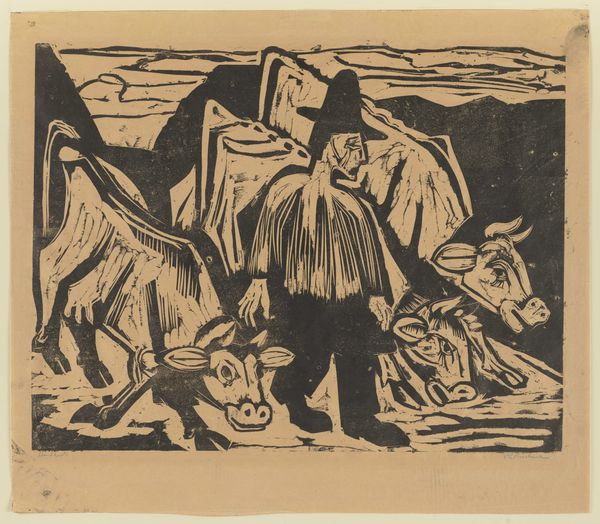
Dimensions: height 240 mm, width 275 mm
Copyright: Rijks Museum: Open Domain
Editor: So, this is Édouard Vuillard's "Visitors in the Tuileries Garden, Paris" from 1895. It's an ink drawing on paper and, to me, it has such a dreamlike quality. What strikes you most when you look at it? Curator: The repetition of form certainly holds significance. Look at how Vuillard renders the figures, their backs turned to us, almost as ciphers. The foliage above seems to echo the rounded forms of the people below, creating a kind of visual mirroring. What do you think that evokes? Editor: A sense of connection maybe? Like the people and nature are part of the same environment, sharing a similar essence? Curator: Precisely. But consider also the implications of masking their faces. Why do you think Vuillard chooses to conceal their identities? Editor: Maybe to make them more universal? To represent a general experience of being in a public space, rather than focusing on individual stories? It also creates a sense of anonymity. Curator: Anonymity, yes, within the burgeoning modern city. Do you notice any visual echoes of this anonymity and its effect on people at the time? Editor: Hmmm... Perhaps the patterned clothing acts like camouflage, further blending them into the scene? Curator: Good eye! The pattern almost seems to merge them into the bustling crowd. How do these repetitions influence the cultural significance or emotional undertones conveyed by the drawing? Editor: I see it as showing the collective experience of modern life and blending into it, not standing out. Curator: The artwork holds symbols from nature and humanity in harmony through patterned connections that were brought up throughout our conversation. Editor: Definitely given me a different way to see and consider Vuillard's drawings.
Comments
No comments
Be the first to comment and join the conversation on the ultimate creative platform.
